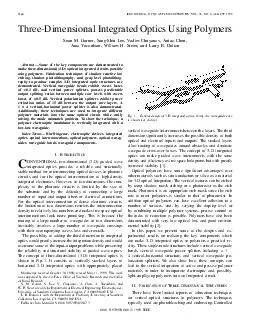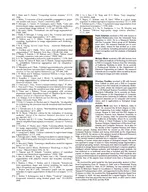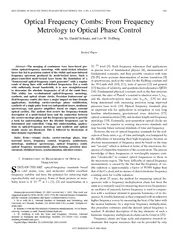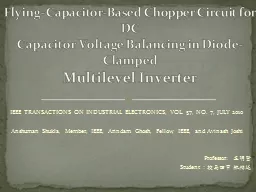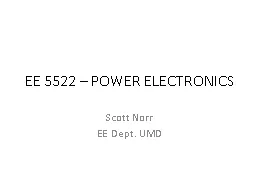PDF-IEEE JOURNAL OF QUANTUM ELECTRONICS VOL
Author : liane-varnes | Published Date : 2015-01-15
35 NO 8 AUGUST 1999 ThreeDimensional Integrated Optics Using Polymers Sean M Garner SangShin Lee Vadim Chuyanov Antao Chen Araz Yacoubian William H Steier and Larry
Presentation Embed Code
Download Presentation
Download Presentation The PPT/PDF document "IEEE JOURNAL OF QUANTUM ELECTRONICS VOL" is the property of its rightful owner. Permission is granted to download and print the materials on this website for personal, non-commercial use only, and to display it on your personal computer provided you do not modify the materials and that you retain all copyright notices contained in the materials. By downloading content from our website, you accept the terms of this agreement.
IEEE JOURNAL OF QUANTUM ELECTRONICS VOL: Transcript
Download Rules Of Document
"IEEE JOURNAL OF QUANTUM ELECTRONICS VOL"The content belongs to its owner. You may download and print it for personal use, without modification, and keep all copyright notices. By downloading, you agree to these terms.
Related Documents

